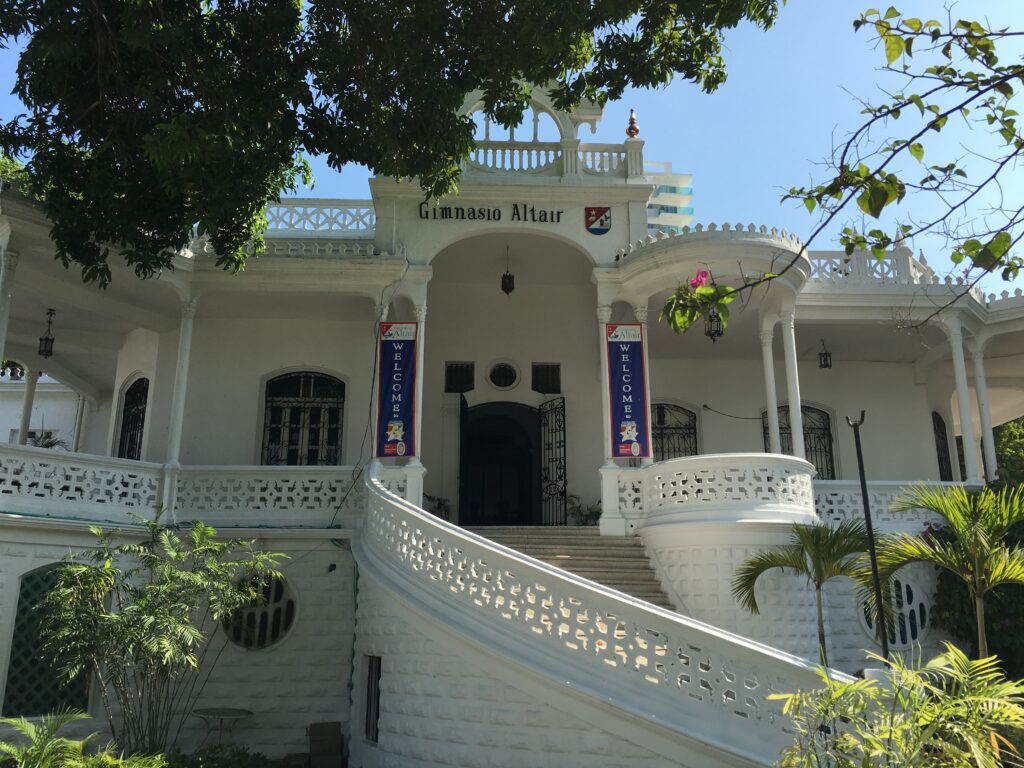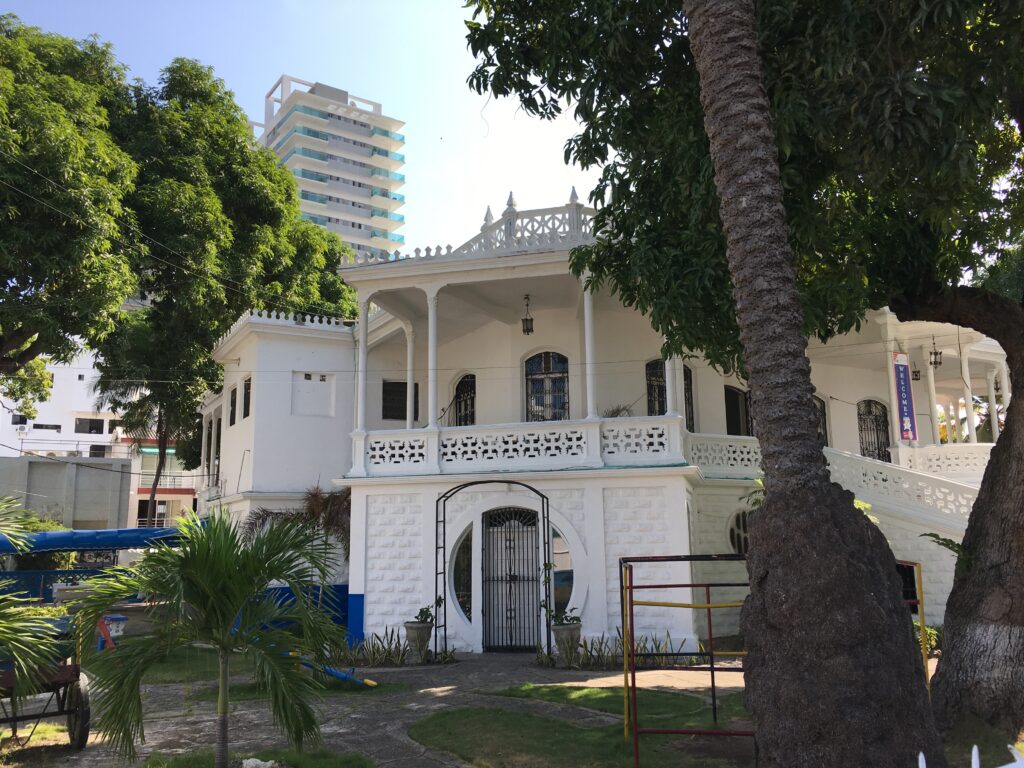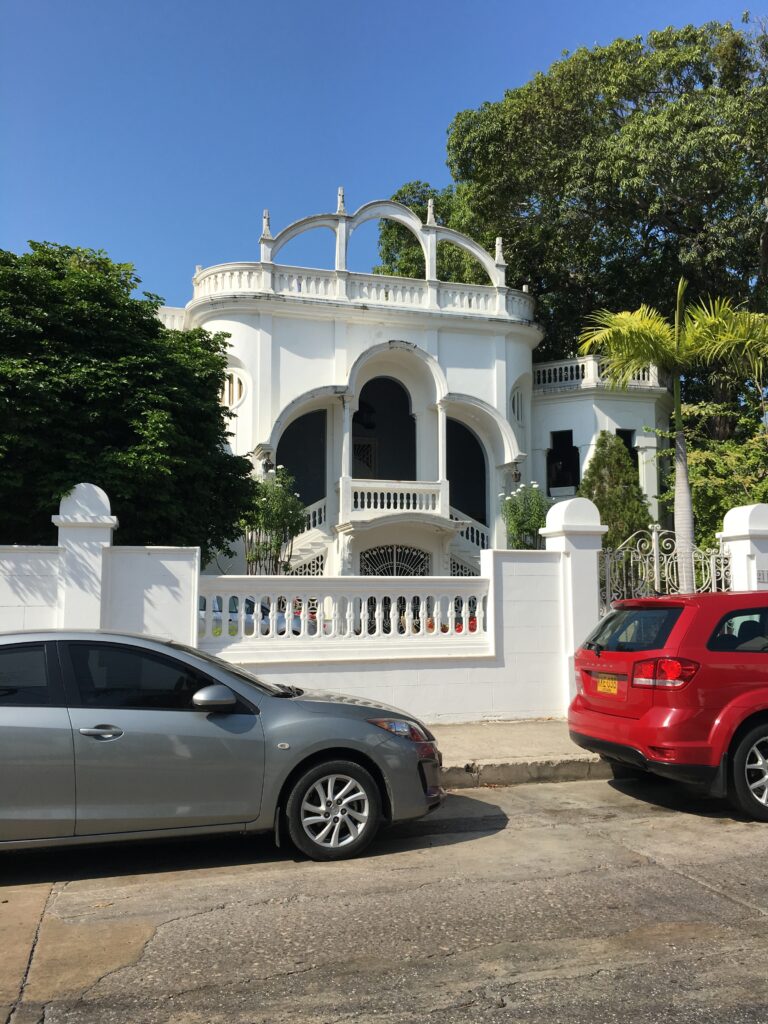You have most likely heard of Cartagena in Colombia. You may not have heard of one of its best neighborhoods, Manga.
Cartagena is more than just beaches and sun. It is also a city marked by gorgeous architecture. Sadly, most of the beautiful homes on the island only remain in the Ciudad Amurallada region; but there is a place where you can get a tiny glimpse at Cartagena’s old splendor. This is a neighborhood called Manga. Think of it like going to Newport in Rhode Island, except the majority of the mansions have been turned into high rises. Lucky for us a few of these majestic homes still remain, so make a point to visit before they are gone forever.
Top Things To Do in Manga, Cartagena
Manga Island is small and not very touristy, which makes it a great place to stay while exploring Cartagena. Below are some of my favorite things to do when staying in Manga, Cartagena:
Take a boat tour around the island.
Visit the Iglesia de la Trinidad in Getsemani
Relax on the beaches in Cartagena
Go to Mercado Bazurto, a bustling market where you can find fresh produce, seafood, and traditional crafts.
- Go on “Doorknob Patrol”. Manga has some incredible historic houses I’ll discuss later in this article, so get your comfy sandals and sunscreen and wander around.
Try Colombian dishes such as ceviche, arepas, and empanadas. Don’t miss out on Colombian hot dogs. You’ll find vendors near the water in Manga that sell them.
Visit the Museo del Oro Zenú in Cartagena: This museum showcases the history and culture of the Zenú people who once inhabited the region.
Go birdwatching: You can take a tour outside of the city and you’ll be privy to a large variety of bird species, making it a great destination for birdwatchers.
Take a sunset stroll: The island offers stunning views of the sunset over the ocean, making it the perfect place for a romantic stroll.
Go fishing: The waters around Manga and Cartagena are teeming with fish, making it a popular destination for fishing enthusiasts.
Visit the La Popa Monastery: This historic monastery is located on a hill overlooking the city and offers breathtaking views of the surrounding area.

The Manga neighborhood of Cartagena was one of the first to be developed outside the city walls, it was uninhabited in the 18th century until Dionisio Jiménez, a general took it upon himself to develop this project.

The people of higher economic status left the old neighborhoods. After a while, they felt trapped by the city walls and wanted something new. A place where they could relax and enjoy their riches.

When Manga was developed, it had both modest homes and mansions. The homes were in the Republican Style. The style bears this name since it developed around the time that Colombia became a Republic. The architecture echoes the political and socioeconomic ideals of Colombians of the time.
The period spans from 1835-1940, with some breaks in between. When visiting Colombia (and Cartagena) one can see its influence throughout.

One of the major factors that brought about this type of architecture was the Industrial Revolution; machines, trains, communications, as well as new building materials arrived in Colombia. This meant growth and development. Colombia was a market for European goods, and those who traveled to Europe brought back with them not only material goods, but architectural ideas.

On top of this, the United States came to the Caribbean islands in the late 19th Century and brought along with them the influences the British empire had ingrained in US architecture.
Where Was Cartagena During All This?

Cartagena started off in sad shape. The city was left in economic ruin after the war, the population numbers had declined and there was a Cholera epidemic to top things off. Due to these factors, Cartagena was a late bloomer.
Residents of Cartagena felt that the 17th & 18th century walls prevented the city from growing, that they kept disease in. Some of the walls were demolished in the late 1800’s & early 1900’s. Around this time a bridge was built to connect the Getsemani neighborhood to Manga, and towards the end of the 19th Century, the city was doing significantly better. The upper crust wanted luxuries. They wanted European goods and civilization.
One started seeing these touches in parks, squares, and theaters. The people were ready for a new place to live. They didn’t want to live in the old part of town, this is when Manga developed and matured and we started to see homes modeled on the European aesthetic on large lots.
In many cities there was the phenomenon of emigration from the higher social classes in search of a new habitat, leaving the oldest neighborhoods in colonial urban areas. In neighborhoods Manga Cartagena, Pie de la Popa, Pie del Cerro and El Cabrero, paths appear on the European model of the time with isolated homes in large lots, with very low occupancy density.
